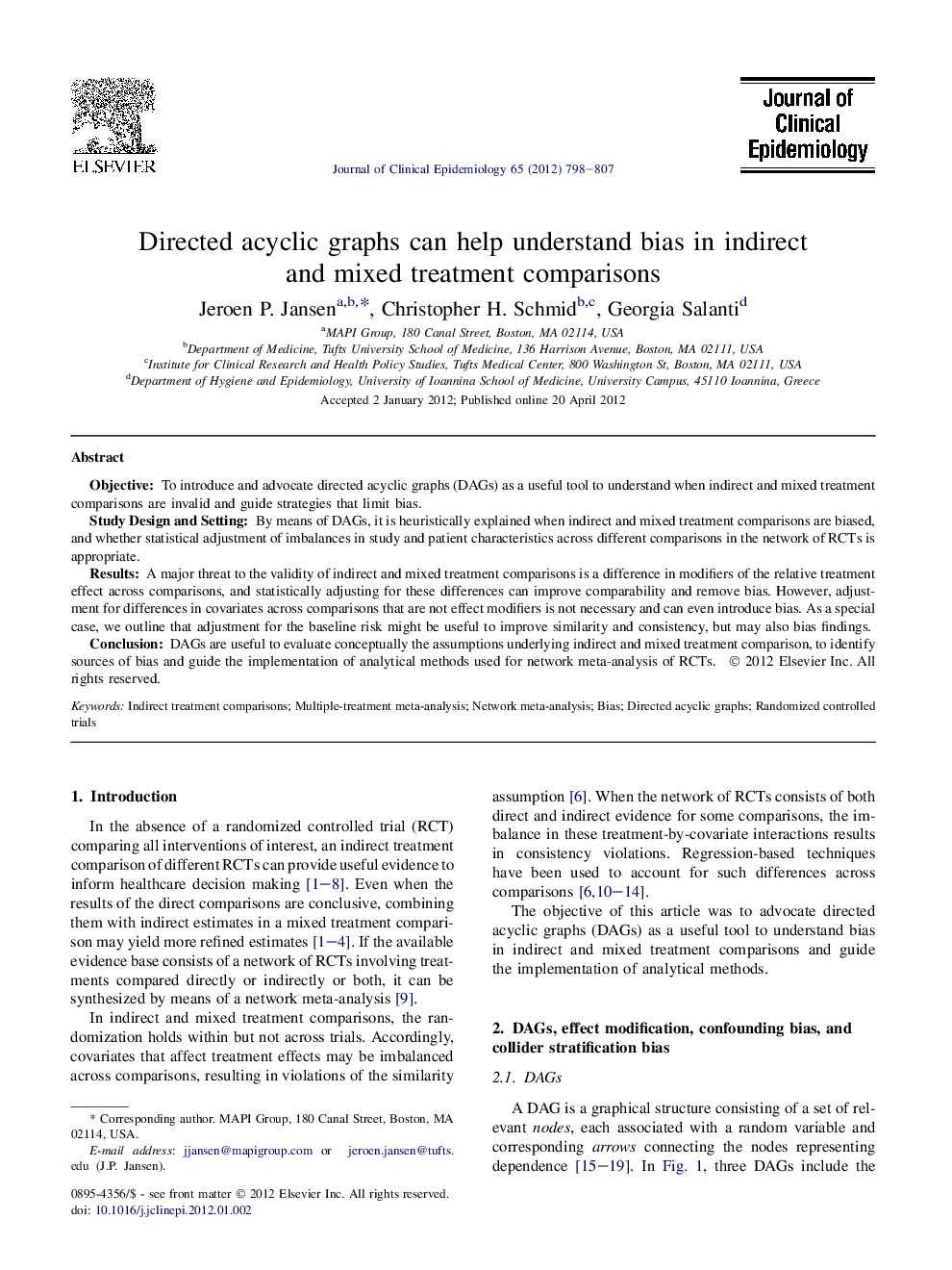| کد مقاله | کد نشریه | سال انتشار | مقاله انگلیسی | نسخه تمام متن |
|---|---|---|---|---|
| 1082382 | 950937 | 2012 | 10 صفحه PDF | دانلود رایگان |
ObjectiveTo introduce and advocate directed acyclic graphs (DAGs) as a useful tool to understand when indirect and mixed treatment comparisons are invalid and guide strategies that limit bias.Study Design and SettingBy means of DAGs, it is heuristically explained when indirect and mixed treatment comparisons are biased, and whether statistical adjustment of imbalances in study and patient characteristics across different comparisons in the network of RCTs is appropriate.ResultsA major threat to the validity of indirect and mixed treatment comparisons is a difference in modifiers of the relative treatment effect across comparisons, and statistically adjusting for these differences can improve comparability and remove bias. However, adjustment for differences in covariates across comparisons that are not effect modifiers is not necessary and can even introduce bias. As a special case, we outline that adjustment for the baseline risk might be useful to improve similarity and consistency, but may also bias findings.ConclusionDAGs are useful to evaluate conceptually the assumptions underlying indirect and mixed treatment comparison, to identify sources of bias and guide the implementation of analytical methods used for network meta-analysis of RCTs.
Journal: Journal of Clinical Epidemiology - Volume 65, Issue 7, July 2012, Pages 798–807
